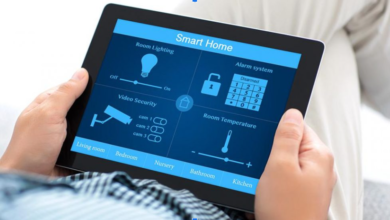Email marketing remains a cornerstone of digital communication, particularly in the B2C space, where businesses aim to build long-lasting customer relationships and drive repeat sales. But in 2025, the stakes are higher. Consumers expect personalized, relevant, and timely messages, and they’re quick to unsubscribe if those expectations aren’t met. With inboxes more crowded than ever, how can businesses ensure their emails are opened, read, and acted upon? That’s where refined email marketing strategies come in. Understanding how to create emails that connect with recipients is not just good practice; it’s essential for business growth.
Email marketing is no longer about batch-and-blast campaigns. Today’s consumers want value. Whether it’s product recommendations based on past behavior, timely offers, or engaging content, they expect emails to deliver something meaningful. This shift requires marketers to focus on the user experience, data-driven strategies, and emerging technologies. In this blog, we’ll explore the best practices in B2C email marketing to help you improve engagement, build brand loyalty, and boost conversion rates in 2025.
Segment Your Audience for Better Personalization
Segmentation is no longer optional, it’s the foundation of modern B2C email marketing. Instead of sending the same message to your entire list, divide your audience into groups based on behavior, preferences, demographics, or purchase history. This allows you to tailor messages that resonate with each group. For example, new customers might receive welcome offers, while loyal buyers can be rewarded with exclusive discounts or early access to sales. The more relevant the content, the higher the open and click-through rates.
See also: Know the Best Draper Screens for Schools and Offices
Optimize Email Subject Lines and Preheaders
The subject line and preheader are the first elements your audience sees. In 2025, crafting these elements with precision is crucial. Avoid clickbait and instead focus on clarity, curiosity, and value. Use A/B testing to see what resonates with your audience. Emojis can be effective, but overuse may reduce their impact. Your preheader text should complement the subject line—think of it as the supporting sentence that nudges the recipient to open the email. Together, they set the tone and expectations for what’s inside.
Embrace Interactive and Visual Email Design
Interactive emails, those that allow users to engage without leaving their inbox, are becoming more popular. Elements like image carousels, embedded videos, accordion menus, and clickable product cards can significantly enhance engagement. A clean, mobile-friendly design is essential since a large portion of users open emails on smartphones. Keep visuals balanced with concise text, and use white space to guide the reader’s eye. Visual storytelling grabs attention and encourages deeper interaction with your content.
Focus on Mobile-First Layouts
With over 70% of email opens now happening on mobile devices, designing for mobile is not just a best practice; it’s a necessity. Use a single-column layout, large fonts, and prominent CTAs (calls-to-action) that are easy to tap. Avoid cluttered designs or excessive scrolling. Ensure that images load properly and that links are thumb-friendly. A responsive, mobile-first design improves both readability and usability, helping you retain attention and drive conversions.
Automate Email Campaigns with Behavioral Triggers
Automation enables marketers to respond to user behavior in real time. Set up workflows that send personalized messages based on specific actions, such as abandoned cart emails, post-purchase follow-ups, or re-engagement campaigns. These automated flows create a sense of timeliness and relevance. Rather than manually creating each email, automation allows you to scale personalization while saving time. Tools like Mailchimp, Klaviyo, and HubSpot are particularly effective for setting up behavioral email sequences.
Make Use of Predictive Analytics and AI
Predictive analytics and AI tools can now anticipate customer needs based on past interactions. In 2025, these technologies will help marketers suggest products, schedule sends at optimal times, and even generate personalized content. AI tools can also assist in audience clustering, churn prediction, and message testing. By leveraging machine learning, marketers can refine their campaigns in real time and increase both engagement and lifetime customer value.
Prioritize Privacy and Consent
With global data privacy regulations like GDPR, CCPA, and new rules emerging in 2025, respecting subscriber privacy is more critical than ever. Always use double opt-in methods and provide clear options to unsubscribe. Let subscribers manage their preferences—what types of emails they want and how frequently. Transparent data practices not only ensure compliance but also build trust, which is essential in any B2C relationship.
Use Dynamic Content for Real-Time Personalization
Dynamic content changes based on user data, allowing you to show different messages or offers within the same email template. For instance, a customer in New York might see winter gear, while a subscriber in Florida sees summer apparel. You can also use real-time countdown timers, weather-based promotions, or location-specific deals. This level of relevance boosts engagement and enhances the customer experience, making your emails feel more like a one-on-one conversation.
Test and Optimize Through Data
One of the biggest advantages of email marketing is its measurability. In 2025, real-time analytics will allow for rapid testing and optimization. Run A/B tests on subject lines, send times, CTAs, and layouts. Track open rates, click rates, conversion metrics, and unsubscribe trends. Use these insights to refine future campaigns. Tools like Litmus or Email on Acid can help preview how your email renders across devices and providers, ensuring consistent delivery and appearance.
Maintain Consistency with Brand Voice
Every email you send contributes to your brand identity. Use consistent colors, tone, and messaging across all communications. Whether your brand is playful, formal, or inspirational, that voice should be reflected in the subject line, copy, and visual design. Consistency builds recognition, strengthens emotional connection, and ensures that your audience knows what to expect every time they hear from you.
Integrate Email with Omnichannel Strategies
Email works best when integrated with your broader marketing strategy. For instance, syncing your email list with social media audiences can allow you to retarget disengaged users or reinforce email messaging through multiple touchpoints. If you’re running a sale or launching a new product, mention it in both your emails and social ads. Some businesses also connect LinkedIn marketing for B2B audiences with email nurturing to guide leads through longer sales cycles. While B2C tends to focus on quicker conversions, the omnichannel model ensures you’re consistently engaging your audience, wherever they are.
Time Emails for Maximum Engagement
Timing plays a huge role in whether an email gets opened. While general best practices suggest mornings during weekdays, your ideal send time depends on your audience. Use data from past campaigns to determine when your specific audience is most active. Some platforms now offer send-time optimization features that tailor delivery based on each subscriber’s historical engagement. Consistent, well-timed delivery helps build habits and anticipation among your subscribers.
Real-Life Example: How a DTC Brand Increased Engagement
Consider the case of a direct-to-consumer (DTC) beauty brand that used B2C email marketing to turn subscribers into loyalists. By segmenting based on skin type, purchase history, and browsing behavior, they sent emails with relevant skincare tips and product suggestions. They also used dynamic content to display real-time inventory updates and local promotions. Within six months, their email open rates jumped by 38%, and their cart recovery emails had a 22% conversion rate. Their approach highlights how personalization, automation, and data can work together to drive results.
Avoid Common Pitfalls
To succeed in B2C email marketing, avoid sending too frequently or using misleading subject lines. Don’t forget to test your emails before sending them out, and never assume what worked once will always work. Keep your list clean by removing inactive subscribers periodically. Also, never overlook the importance of accessibility; ensure your emails are readable for all users, including those using screen readers.
Conclusion
Improving engagement with B2C email marketing in 2025 requires more than just creative content; it demands strategy, personalization, data-driven decisions, and user-centric design. From segmentation and automation to AI-powered insights and responsive layouts, each element plays a vital role in getting your message across effectively. While the tools and tactics may evolve, one thing remains constant: understanding your audience and delivering value will always be at the heart of successful email marketing. By embracing these best practices, you can craft campaigns that not only capture attention but also nurture lasting customer relationships.


